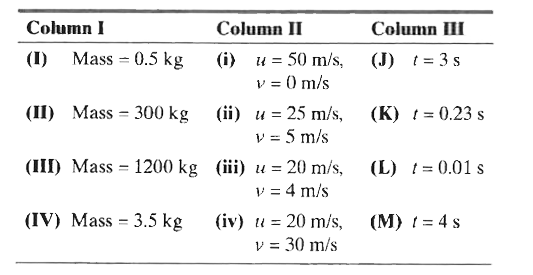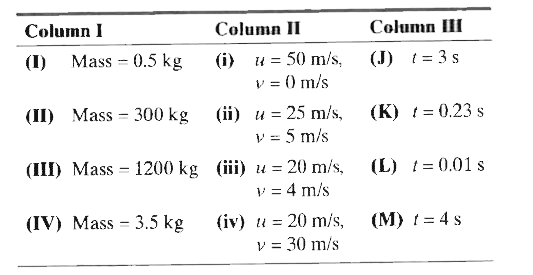On withdrawing the applied force on some objects, the deformity caused gradually diminishes with time. This is called
elastic fatigue
elastic limit
coefficient of elasticity
elastic after effect
The correct Answer is:C
Step by step video, text & image solution for On withdrawing the applied force on some objects, the deformity caused gradually diminishes with time. This is called by Physics experts to help you in doubts & scoring excellent marks in Class 12 exams.
Topper's Solved these Questions
- BOOK - MOTIONCHAPTER - ELASTICITY AND THERMAL EXPANSIONEXERCISE - Exercise - 2 (Level-I) (Section B - Thermal Stress, Hookes Law)3videos
ELASTICITY AND THERMAL EXPANSION
- BOOK - MOTIONCHAPTER - ELASTICITY AND THERMAL EXPANSIONEXERCISE - Exercise - 2 (Level-I) (Section C - Youngs Modulus, Poissions Ratio)2videos
ELASTICITY AND THERMAL EXPANSION
- BOOK - MOTIONCHAPTER - ELASTICITY AND THERMAL EXPANSIONEXERCISE - Exercise -1 (Section D - Thermal Expansion (Solid , Liquids & Gas) & types, Applications (Ex Bimetallic strip etc))4videos
ELASTICITY AND THERMAL EXPANSION
- BOOK - MOTIONCHAPTER - ELASTICITYEXERCISE - EXERCISE -360videos
ELASTICITY
- BOOK - MOTIONCHAPTER - Electrical Instrument EXERCISE - EXERCISE -316videos
Electrical Instrument
Similar Questions
Knowledge Check
- Question 1 - Select One
On withdraw in the external applied force on bodies within the elastic limit, the body
Aregains its previous state very quicklyBregains its previous state after some timeCregain its previous state after a very long timeDdoes not regain its previous state - Question 2 - Select One
A force may cause in an object
Achange in inertiaBchange in massCchange in weightDnone of these - Question 3 - Select One
If no force is applied to a moving object, then it will stop due to:
ATensionBMomentumCImpulseDFriction
A constant force acts on object of mass 5 kg for a duration of 2s It increases the object's velocity from 3m/s to 7m/s Find the magnitude of the applied force. Now if the force were applied for a duration of 5s what would be the final velocity of object?
View SolutionThe force by which object tend to push each other is called
View SolutionThe force by which object tend to pull each other is called
View SolutionIn the given table, Column I shows masses of the objects, Column II shows the initial and final velocity of the object after force is applied on it and Column III shows the time span for which force is applied on the object.

Conditions for a dumbbell with the force of 1000 N applied in same direction of motion are :View SolutionIn the given table, Column I shows masses of the objects, Column II shows the initial and final velocity of the object after force is applied on it and Column III shows the time span for which force is applied on the object.

Conditions for a hammer with the force of 2500 N applied in opposite direction of motion are:View Solution

